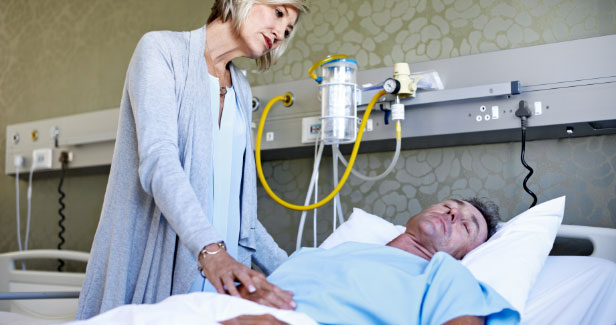At St. James’s Hospital, patients with a known diagnosis or possible diagnosis of cancer give consent to a cancer specialist nurse or surgeon to take tissue samples for research (see Consent form, Patients section). As soon as the surgeon completes the operation, the operation specimen – breast lump/mastectomy or colon – is taken rapidly to the histopathology department. The pathologist examines it and samples some surplus tissue – cancer and normal – for the biobank scientist to prepare for the biobank. Coded data on the sample and pathology – when completed – are entered in the database.
In 2008-2018, 6400 frozen samples – breast cancer (2010) and colorectal cancer (290) – have been collected and stored in the St. James’s Hospital Cancer Biobank from patients who have given consent for research. Since 2018, samples have been taken primarily for FFPE, but frozen samples are taken prospectively for bespoke projects. To date, 3500 frozen samples have been collected, and will be available for multiple projects. This has been achieved by the willing cooperation of many members of the hospital staff, including senior management.
Staff in the SJH Cancer Biobank (2020): Dr Richard Flavin (Director), Blanaid Mee PhD (Biobank Manager), Una Gibbons PhD and Aoife Tanaka (Biobank Scientists), Lino Manalato (Biobank INTRA student) and Laura Tier (Executive Officer)
Grants of €20,000 have also been given to both Cork University Hospital and NUI Galway for biobanking projects.
Funds donated to Biobank Ireland paid the biobank scientist’s salary for 4 years, and this is now a hospital post. Cork and Galway University Hospitals participated in designing the Consent Form, Patient Information Leaflet and Sample Access Policy, all of which were also approved by the Data Protection Commissioner’s Office and National Cancer Registry. Funding for the Cork and Galway University Hospital biobanks is urgently needed.
The St James’ Hospital Cancer Biobank has had applications from several academic groups and has supplied both frozen and FFPE samples of breast, colon and other cancers to local researchers and Irish research collaborations. The biobank has streamlined the sample and data application process, formerly managed by Histopathology, by using the same application procedure for frozen and FFPE samples. Tiered Cost Recovery charges apply.
Biobank Ireland and St James’s Hospital Cancer Biobank collaborate with Cancer Trials Ireland (to store blood samples for international clinical trials), and with Breast Predict, an Irish Cancer Society / Science Foundation Ireland-funded national breast cancer research project based in UCD.
Biobank Ireland’s Blanaid Mee led the design of a new Irish Patient Consent Form and Patient Information Leaflet together with Clinical Research Development Ireland and patient advocate group Patient Voice for Cancer Research.
Biobank Ireland has completed development of a new BIMS (Biobank Information Management System) or database with Modul-Bio, a French company with extensive experience of working with biobanks. The BIMS includes nearly 7000 prospectively collected tissue samples and also includes data on samples released for projects. The BIMS is being used by the Thoracic Oncology research group and will be available for use by other Irish biobanks.
In the next phase there will be a web portal (online catalogue) that researchers can search for coded samples and restricted data of interest.
Everyone is a stakeholder in biobanking. Specific interested parties include patients, patient groups, members of the public, researchers, biobank staff, hospital staff and hospitals, ethicists, lawyers, universities, international biobank experts, politicians, funding agencies and biopharmaceutical companies to develop new treatments and tests. This does not include the commercial sector that develops sophisticated software, laboratory equipment, storage systems, etc for use in biobanks.
In May 2018 The European Union introduced the General Data Protection Regulations (GDPR) which are designed to give EU citizens more control over their personal data. Although GDPR were intended to harmonise data regulation in member states, individual countries differ in their interpretation. In Ireland, the Data Protection Act and Health Research
Regulations (2018), passed in response to GDPR, have presented very significant challenges to biobanks and researchers.
In January 2015, US President Obama launched the Precision Medicine Initiative (to treat each patient according to his / her individual characteristics). This very large scale project will involve 1 million American participants and will depend on coordinated biobanking.
Since 2004, Biobank Ireland has held several meetings to promote awareness for, and obtain the input of the public and multiple stakeholder groups. Particularly relevant for all stakeholders were meetings in The Royal College of Physicians of Ireland in 2007, Croke Park in 2008, attended by the Minister for Health Mary Harney, and St James’s Hospital in 2014, all of which had positive media coverage. The 2014 meeting featured a panel of diverse biobanking stakeholders who were interviewed by Aine Lawlor of RTE. Fundraisers are very well supported because fundraising committees are extremely committed.
We continue to learn from and maintain best international practice through discussions with biobank experts at international meetings of the International Society for Biological and Environmental Repositories (ISBER) and European, Middle Eastern & African Society for Biopreservation and Biobanking (ESBB).
These are our recent publications. Download them below:
- Mee B, Kirwan M, Clarke N, et al. What GDPR and the Health Research Regulations (HRRs) mean for Ireland: a research perspective [published online ahead of print, 2020 Jul 29]. Ir J Med Sci. 2020;10.1007/s11845-020-02330-3. doi:10.1007/s11845-020-02330-3
https://rdcu.be/b5Xzf - Kirwan, M., Mee, B., Clarke, N. et al. What GDPR and the Health Research Regulations (HRRs) mean for Ireland: “explicit consent”—a legal analysis. Ir J Med Sci (2020). https://doi.org/10.1007/s11845-020-02331-2
https://rdcu.be/b5XFe






